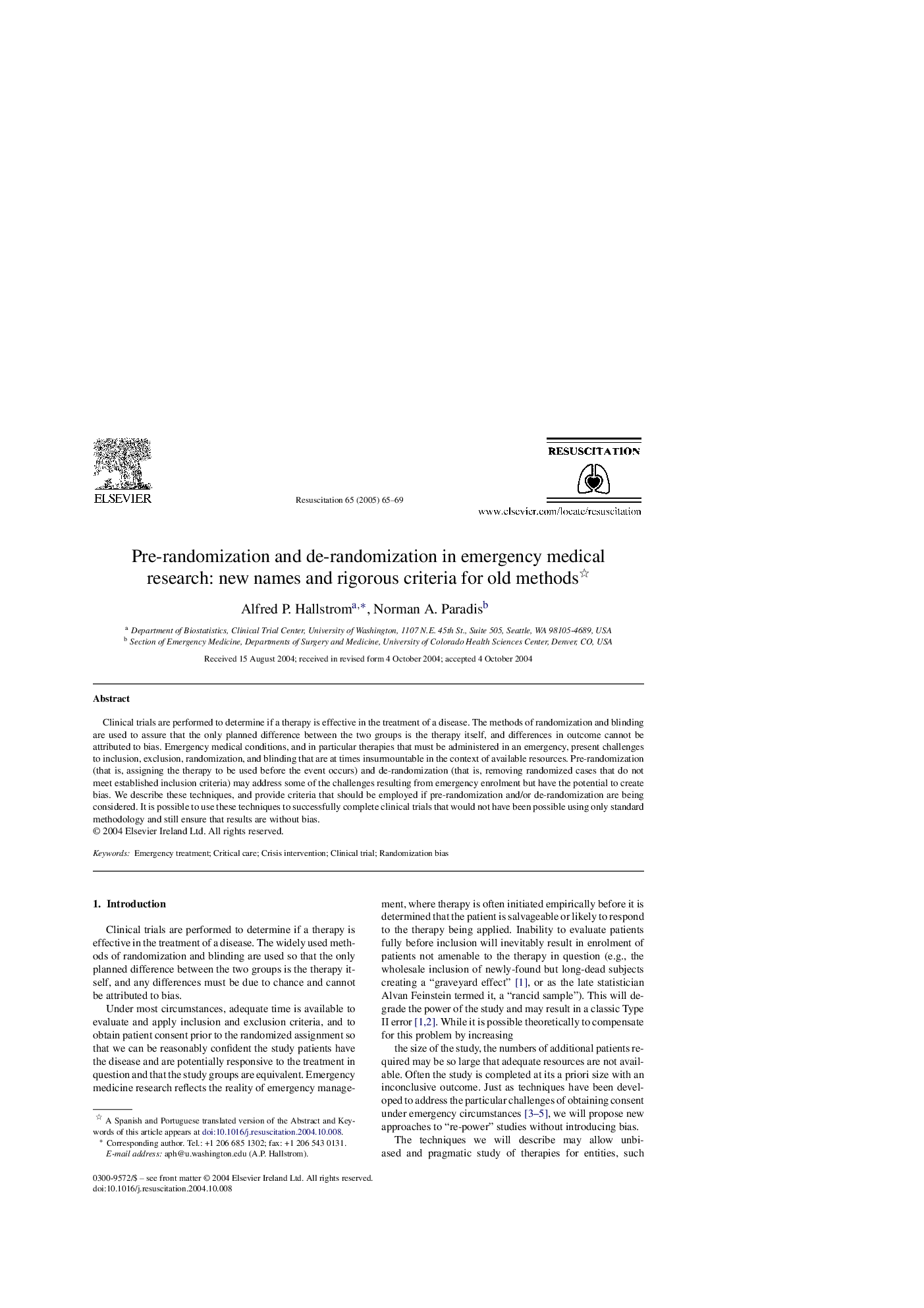| Article ID | Journal | Published Year | Pages | File Type |
|---|---|---|---|---|
| 9180157 | Resuscitation | 2005 | 5 Pages |
Abstract
Clinical trials are performed to determine if a therapy is effective in the treatment of a disease. The methods of randomization and blinding are used to assure that the only planned difference between the two groups is the therapy itself, and differences in outcome cannot be attributed to bias. Emergency medical conditions, and in particular therapies that must be administered in an emergency, present challenges to inclusion, exclusion, randomization, and blinding that are at times insurmountable in the context of available resources. Pre-randomization (that is, assigning the therapy to be used before the event occurs) and de-randomization (that is, removing randomized cases that do not meet established inclusion criteria) may address some of the challenges resulting from emergency enrolment but have the potential to create bias. We describe these techniques, and provide criteria that should be employed if pre-randomization and/or de-randomization are being considered. It is possible to use these techniques to successfully complete clinical trials that would not have been possible using only standard methodology and still ensure that results are without bias.
Related Topics
Health Sciences
Medicine and Dentistry
Cardiology and Cardiovascular Medicine
Authors
Alfred P. Hallstrom, Norman A. Paradis,
